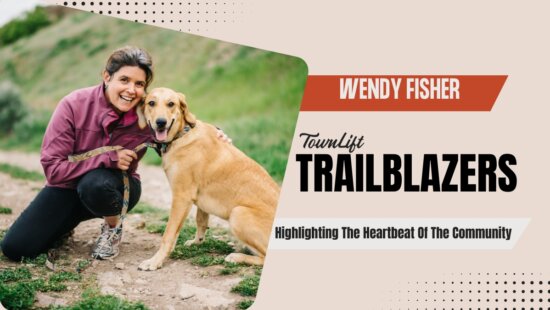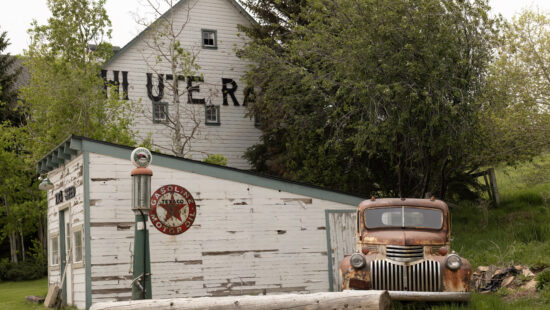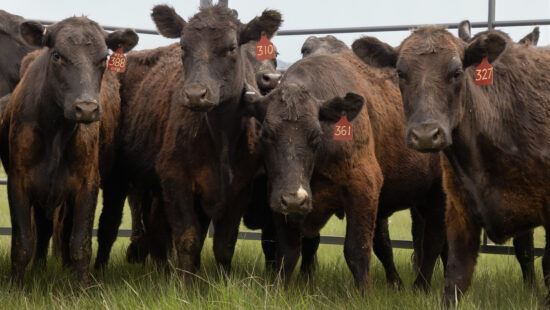Environment
Mid-Mountain Connector Trail to cross Hi-Ute Ranch, advancing conservation and access

Mountain biker on Baker-Griswold Open Lands Preserve. Photo: Utah Open Lands
PARK CITY, Utah — Construction on a long-anticipated trail connector that will link the Mid-Mountain Trail to the Ecker Hill park-and-ride is set to begin July 1. The project, made possible through a multi-agency collaboration, will cross Hi-Ute Ranch, a 344-acre property recently protected under a conservation easement held by Utah Open Lands.
“This is the culmination of decades of visioning and partnerships,” said Wendy Fisher, executive director of Utah Open Lands. “It’s a project that reflects how conservation has evolved to include both ecological function and meaningful public access.”
Fisher emphasized that Utah Open Lands, working with Snyderville Basin Special Recreation District (Basin Rec) and Summit County, helped secure the land through private fundraising and open space bond funding. The landowners, who prefer to remain anonymous, also made a substantial contribution by donating the land value of the easement.
The Mid-Mountain Connector will cross a section of the Hi-Ute Ranch known as the canyon portion of the property. This is the second conservation easement Utah Open Lands has completed on the ranch. The trail, once complete, will link Deer Valley to Kimball Junction and offer a direct connection to Ecker Hill Middle School and the nearby park-and-ride.
Utah Open Lands will contribute a $35,000 grant toward trail construction, with Basin Rec overseeing the project. District officials, including Director Dana Jones and Trails and Open Space Manager Phares Gines, coordinated five separate easements to make the connection possible, including one from the Park City School District approved in May.
Fisher credited much of the early trail visioning to Bonnie Park, the first executive director of Basin Rec. “A lot of the trail system we enjoy today was a big part of her work early on,” Fisher said. “Now you have great people like Matt Wagoner, Phares Gines, and Dana Jones continuing that legacy. I’d be remiss not to acknowledge the constant work Basin Rec has done to bring this trail to life.”
The connector will take two summers to complete, with completion anticipated in fall 2026. Alongside trail development, Utah Open Lands has coordinated regenerative grazing practices with 3 Springs Ranch and launched noxious weed mitigation efforts to preserve the health of the land.
Fisher emphasized the importance of protecting scenic and ecological values as recreation use increases across the Wasatch Back. “We always look at the balance,” she said. “How do we help people engage with the landscape while protecting wildlife habitat and minimizing potential conflicts?”
She noted that a portion of the new trail will be closed each spring during elk calving season and that trail sightlines have been designed to reduce visual impacts on the landscape. “Creating a good connection that’s safe and responsible—for wildlife, for kids at Ecker Hill, for regenerative agriculture—that’s all been part of the conversation,” she said.
When asked about challenges in building trail infrastructure across private and conserved land, Fisher pointed to the need for strong stewardship by users.
“The biggest obstacle is the perception that trail users aren’t always good stewards,” she said. “Do you turn around when the trail is muddy? Do you keep your dog on leash? Do you stay off trails when they’re closed? These are the things that matter to landowners and to the future of trail access.”
Looking forward, Fisher sees the Mid-Mountain Connector as a piece of a broader, more mindful approach to shared landscapes.
“We’re not making more land,” she said. “So we all have to share—with each other and with the wildlife. That means we have to elevate the experience rather than degrade it.”
Referencing Utah Open Lands’ Leave It Loved campaign, Fisher urged trail users to “challenge their inner steward” and recognize their role in the shared future of the Wasatch landscape.
“This is about more than just building a trail,” she said. “It’s about building a relationship with the land—one that honors the wildlife, the wildflowers, and the generations that will come after us. If we treat these places with respect, they’ll continue to give back in ways we can’t yet imagine.”




















